Wednesday, August 2: From the Motoyasu Bridge Pier bordering Peace Memorial Park in Hiroshima, I take a 50-minute ferry ride to the island of Miyajima for 2,000 yen (~$18). The ride is quite pretty, with islands jutting up in green mounds out of the choppy Hiroshima Bay.

Hiroshima Bay from the ferry
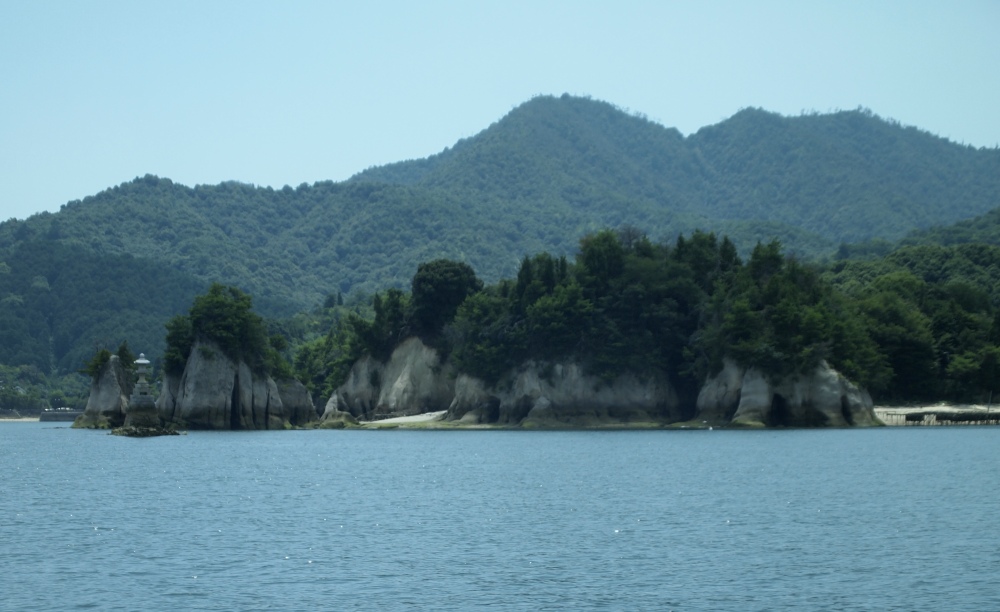
on the way to Miyajima

Hiroshima Bay from the ferry

Boat from Motoyasu Bridge Pier to Miyajima
I checked the tidal information before I came, as it’s recommended to come around high tide to see the best view of the O-torii Gate at Itsukushima Shrine. I’ve arrived at the island at 12:47 pm, and high tide isn’t until 18:42, slightly less than 6 hours from my arrival time. I know there is no way I will stay that late as I must return by ferry to Hiroshima. Maybe I will be able to see the tide rise high enough during the day to get some decent photos of the famous floating torii.
I had read you could rent bicycles on Miyajima, but I’m told by someone at Tourist Information that it’s impossible. Apparently, the island is easily walkable, so I promptly set off on foot.
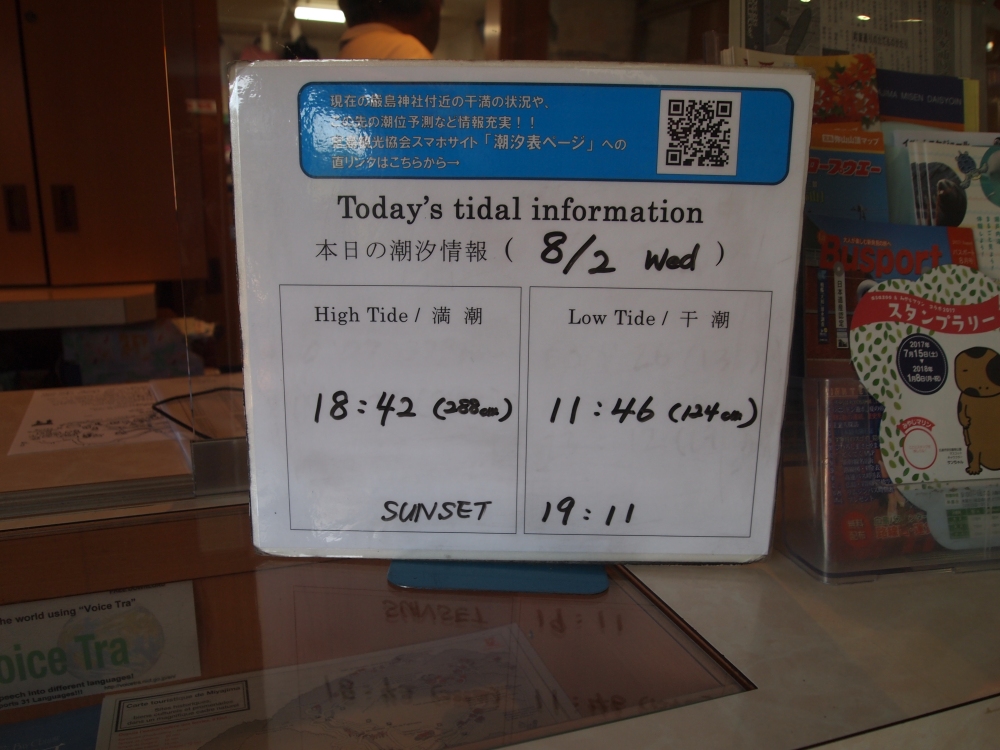
Today’s tidal information
I’ve heard all about Nara’s famous deer, but I’m surprised to find deer wandering the streets of Miyajima. The deer here are wild, but we’re warned they may eat paper and cloth, especially tickets and souvenirs.

deer in Miyajima
I walk along the main street of the town, but turn inward to enter Omotesando Shopping Arcade. As it’s after lunchtime, I’m hungry, so I keep my eye out for a restaurant. I’ve heard that Miyajima is famous for its broiled or grilled oysters, so I’d like to find some of those.

beginning of Omotesando Shopping Arcade
Some of the deer seem to be looking for dining spots as well.

shopping deer
The arcade is shaded, luckily, as it’s extremely hot and humid. I don’t know how I’m going to last very long in the heat today. At least I hope to find air conditioning in a restaurant.

Omotesando Shopping Arcade
There are so many cute things I’m tempted to buy in the shopping arcade, but buying anything means I’ll have to carry whatever it is around for the rest of my week of travels. As I only have a carry-on bag with me, and it’s already packed, I have to pass on everything.
I love the Japanese traditional Kokeshi Dolls, but luckily I already bought a small one at Hanazono-jinja’s flea market in Shinjuku. It’s already in a box on its way back to Virginia.

Japanese Traditional Kokeshi Dolls
I decide to eat at this restaurant graced by a smiling deer. The plastic foods on display show broiled oysters.

restaurant for grilled oysters
I enjoy my meal of Kaki-no-sugata Yaki, or broiled oysters in the shells, but I must admit the meal doesn’t fill me up. Oh well, I’m planning to eat Okonomiyaki, Hiroshima’s famous dish, tonight, so I’m okay not to eat too much. Besides, it’s too hot outdoors to walk around on a full stomach.
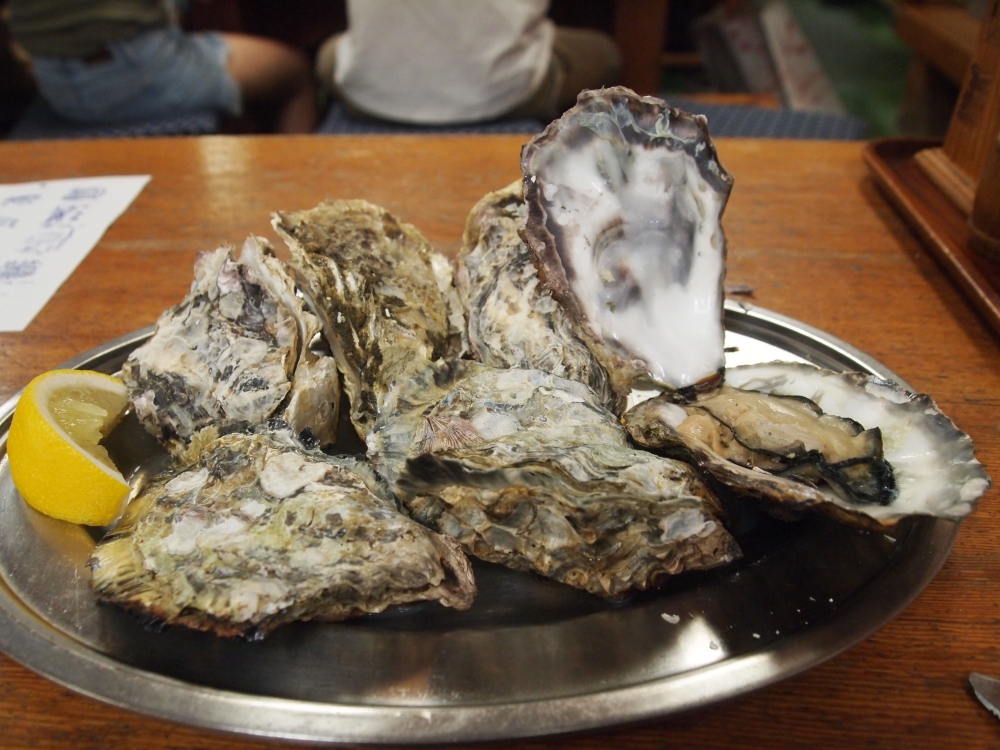
Kaki-no-sugata Yaki
I don’t really know where I’m going in this town, but I follow the road to the conspicuous Five-storied Pagoda and Senjokaku, also called Toyokuni Shrine.
The Five-storied Pagoda, built in 1407, enshrined Yakushi Nyorai Zazo, the Buddha of Medicine, as well as Fugen Bosatsu (Mercy Buddha) and Monju Bosatsu (Wisdom Buddha).
Yakushi Nyorai Zazo, the Buddha of Medicine, is said to have been made by Kūkai, also known posthumously as Kōbō-Daishi, 774–835. He was a Japanese Buddhist monk, civil servant, scholar, poet, and artist who founded the Shingon or “True Word” school of Buddhism (Wikipedia: Kūkai).

upstairs to the Five-Storied Pagoda
From the hilltop where the Five-storied Pagoda sits, I can see the mainland and the town of Hatsukaichi.

view from Senjokaku pavilion
Senjokaku (literally “Pavilion of 1000 mats”), also called Toyokuni Shrine, is the largest structure at Miyajima Island. It’s basically an open-air hall that has ancient paintings hanging from its rafters. Today many Japanese folks find respite from the searing sun on the pavilion’s cool and smooth floors.
Toyotomi Hideyoshi, a preeminent daimyō (powerful feudal lord), warrior, general, samurai, and politician of the Sengoku period, started construction of Senjokaku as a Buddhist library where people could chant Senbu-kyo sutras for fallen soldiers.
Hideyoshi is regarded as Japan’s second “great unifier,” bringing an end to the Warring States period (c. 1467 – c. 1603). He died in 1598 and the building was never fully completed. Originally, Amida Buddha and two subordinate Buddhist saints, Anan and Kasho-sonja, were enshrined in the structure until the Meiji reformation, when the structure was converted into a Shinto shrine dedicated to Toyotomi Hideyoshi.
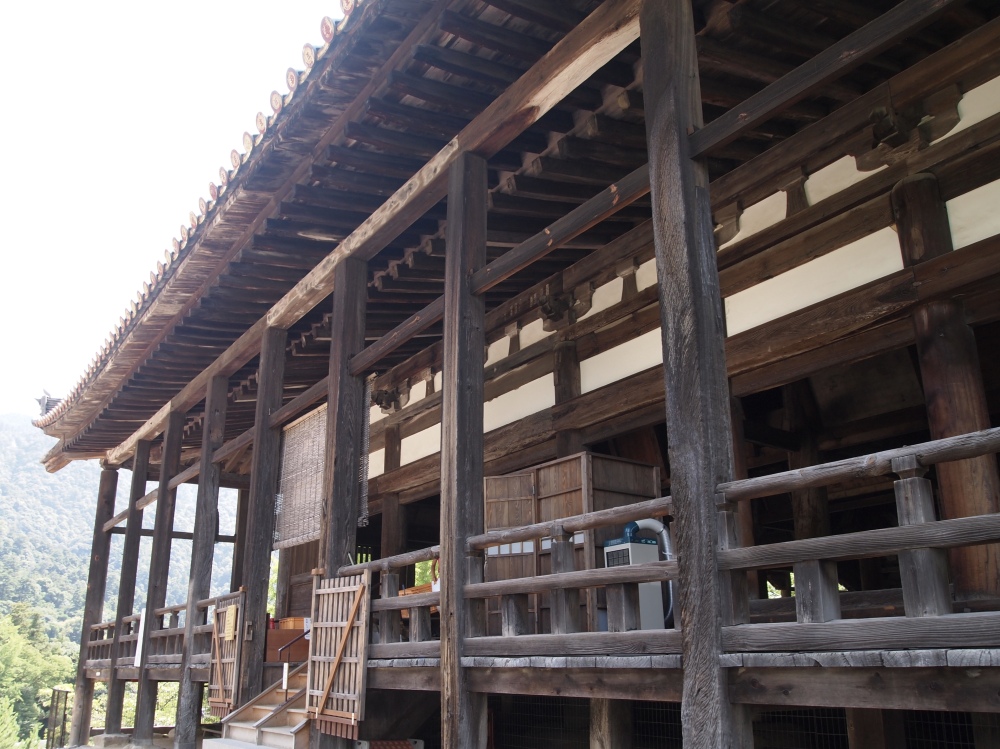
Senjo-kaku pavilion

Five-Storied Pagoda
From the hilltop, I can see some of Miyajima’s many shrines, most notably Itsukushima Shrine, home of the floating torii.

view from paintings at Senjokaku pavilion
Numerous votive picture tablets that had been hanging in the Itsukushima Shrine buildings until the Meiji era hang today on the walls inside Senjokaku.

paintings at Senjokaku pavilion

paintings at Senjokaku pavilion

Senjokaku pavilion
I love the airy feel of Senjokaku pavilion. I wander around here for some time, enjoying the shaded area with a bit of a breeze whispering through. The multitudes of ancient paintings create an atmosphere heavy with history.

Senjokaku pavilion
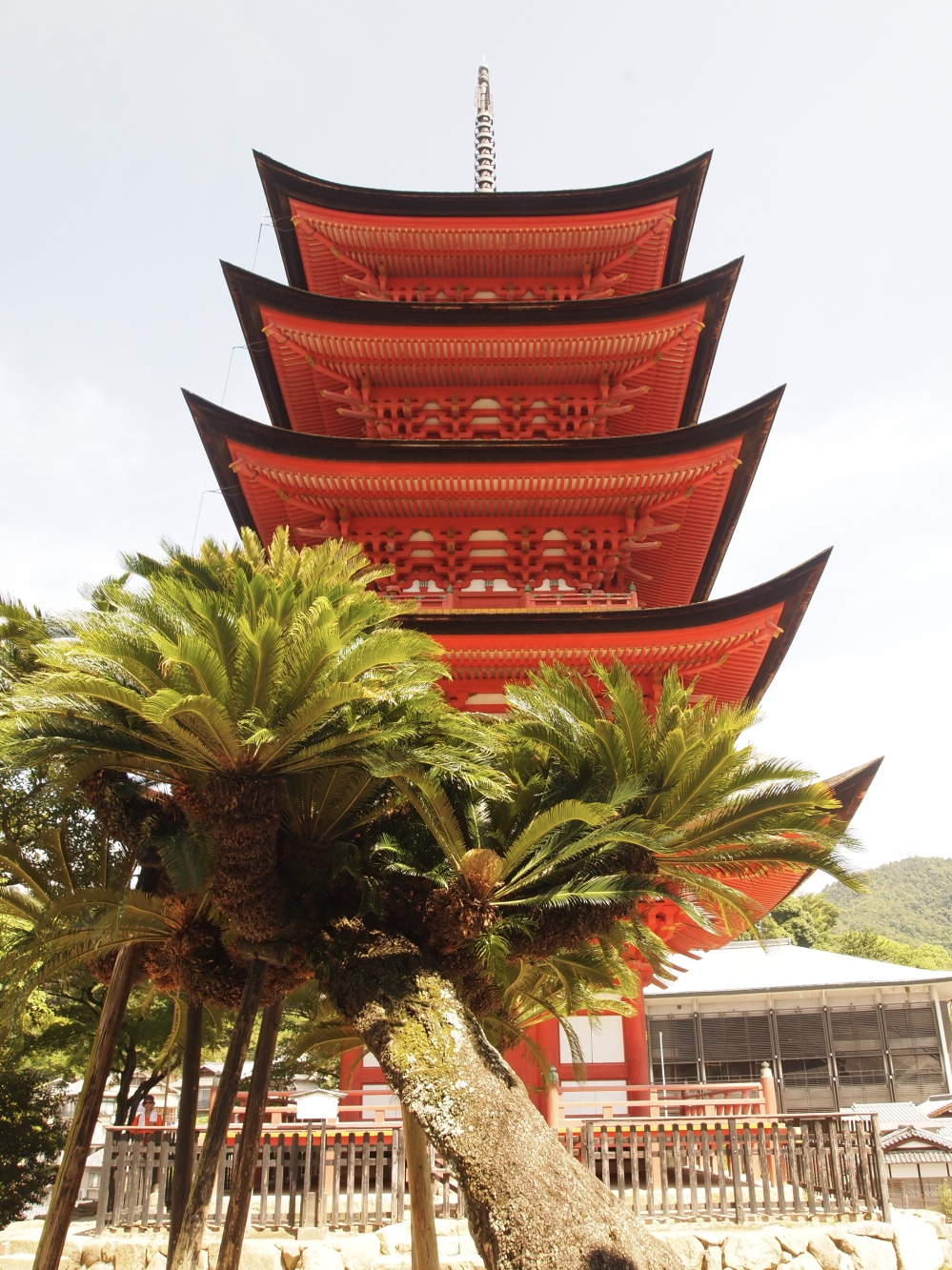
Five-Storied Pagoda
Finally, I leave the pavilion and head downhill in search of the famous O-torii Gate. On the way, I pass more friendly deer. It’s only 2:14, so the tide won’t be high enough yet to make the torii gate picturesque.

deer in Miyajima
I continue on to the beach, where I find people wading out in the water around the O-torii Gate. At least it’s not sitting in mud at this point!











